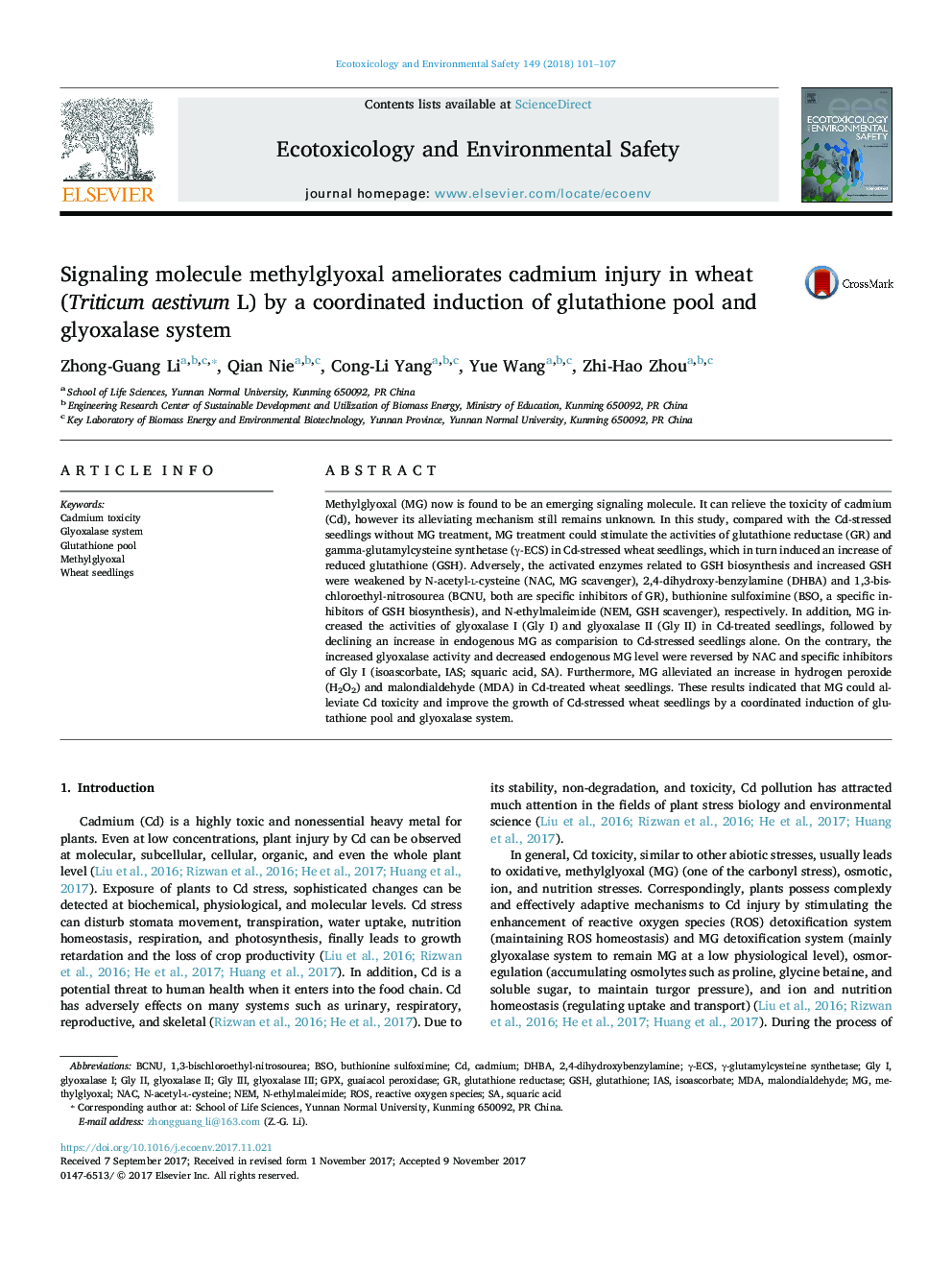| Article ID | Journal | Published Year | Pages | File Type |
|---|---|---|---|---|
| 8854527 | Ecotoxicology and Environmental Safety | 2018 | 7 Pages |
Abstract
Methylglyoxal (MG) now is found to be an emerging signaling molecule. It can relieve the toxicity of cadmium (Cd), however its alleviating mechanism still remains unknown. In this study, compared with the Cd-stressed seedlings without MG treatment, MG treatment could stimulate the activities of glutathione reductase (GR) and gamma-glutamylcysteine synthetase (γ-ECS) in Cd-stressed wheat seedlings, which in turn induced an increase of reduced glutathione (GSH). Adversely, the activated enzymes related to GSH biosynthesis and increased GSH were weakened by N-acetyl-L-cysteine (NAC, MG scavenger), 2,4-dihydroxy-benzylamine (DHBA) and 1,3-bischloroethyl-nitrosourea (BCNU, both are specific inhibitors of GR), buthionine sulfoximine (BSO, a specific inhibitors of GSH biosynthesis), and N-ethylmaleimide (NEM, GSH scavenger), respectively. In addition, MG increased the activities of glyoxalase I (Gly I) and glyoxalase II (Gly II) in Cd-treated seedlings, followed by declining an increase in endogenous MG as comparision to Cd-stressed seedlings alone. On the contrary, the increased glyoxalase activity and decreased endogenous MG level were reversed by NAC and specific inhibitors of Gly I (isoascorbate, IAS; squaric acid, SA). Furthermore, MG alleviated an increase in hydrogen peroxide (H2O2) and malondialdehyde (MDA) in Cd-treated wheat seedlings. These results indicated that MG could alleviate Cd toxicity and improve the growth of Cd-stressed wheat seedlings by a coordinated induction of glutathione pool and glyoxalase system.
Keywords
NACBCNUN-acetyl-l-cysteineiAsBSODHBAGPXGSHN-ethylmaleimideγ-ECSMDAGlyoxalase systemROSγ-glutamylcysteine synthetaseSquaric acidbuthionine sulfoximinemalondialdehydeMethylglyoxalCadmium toxicityNEMWheat seedlingsCadmiumGlutathioneglutathione reductaseglyoxalase IGlyoxalase IIguaiacol peroxidaseReactive oxygen species
Related Topics
Life Sciences
Environmental Science
Environmental Chemistry
Authors
Zhong-Guang Li, Qian Nie, Cong-Li Yang, Yue Wang, Zhi-Hao Zhou,
